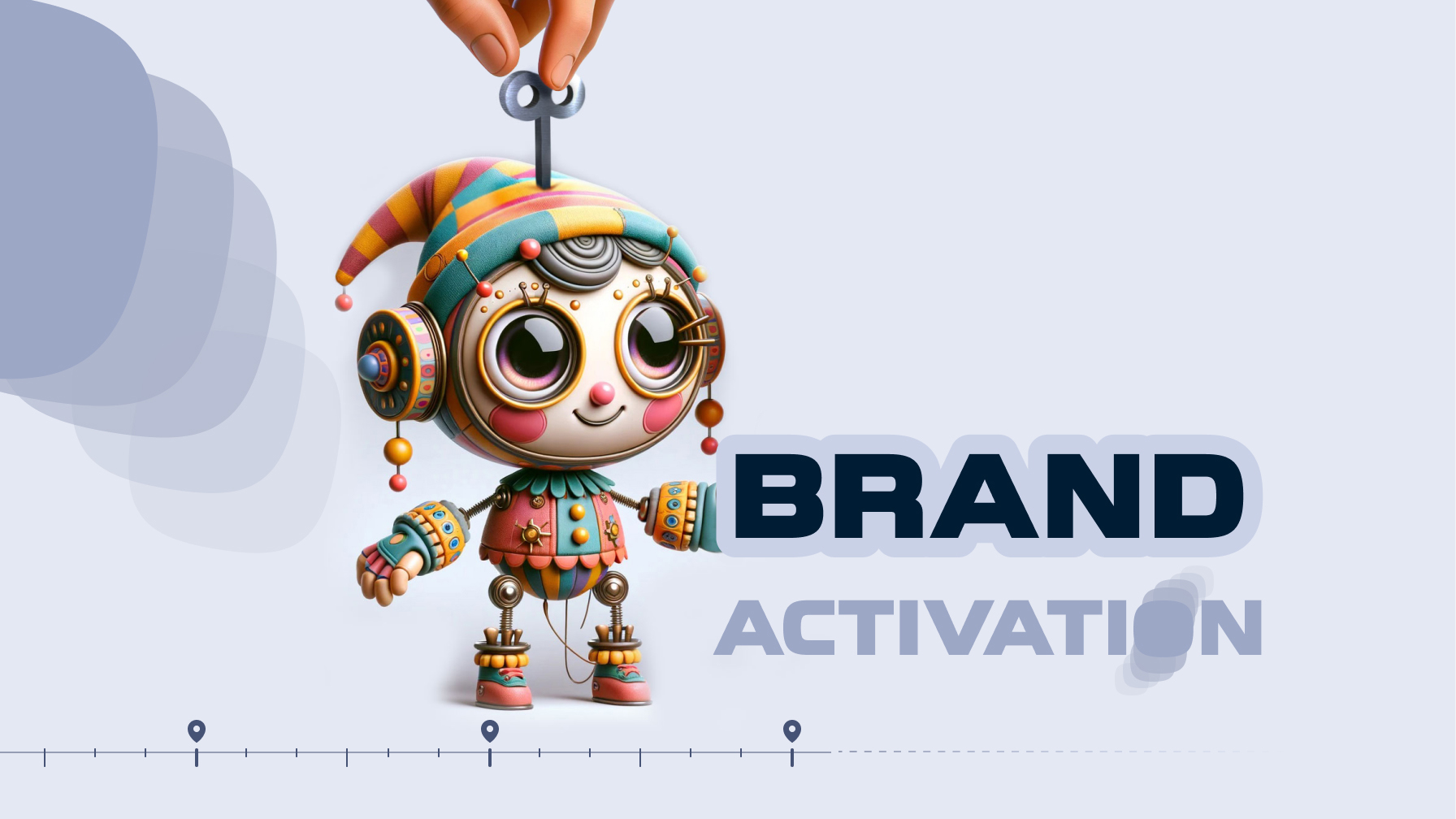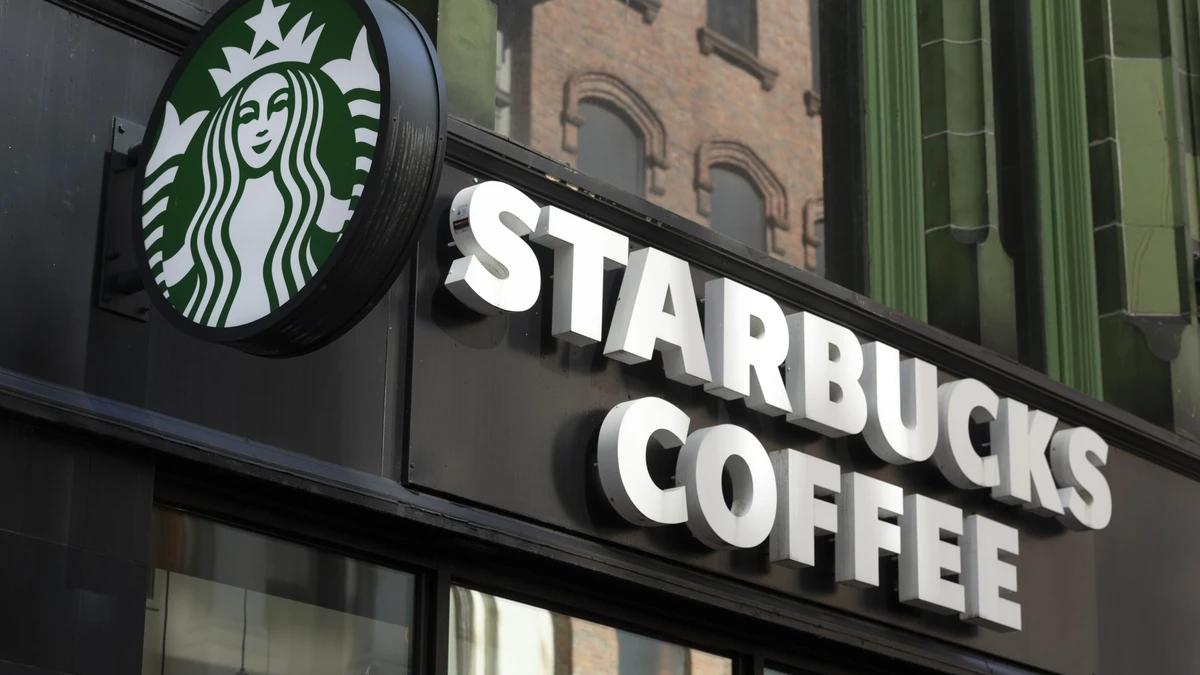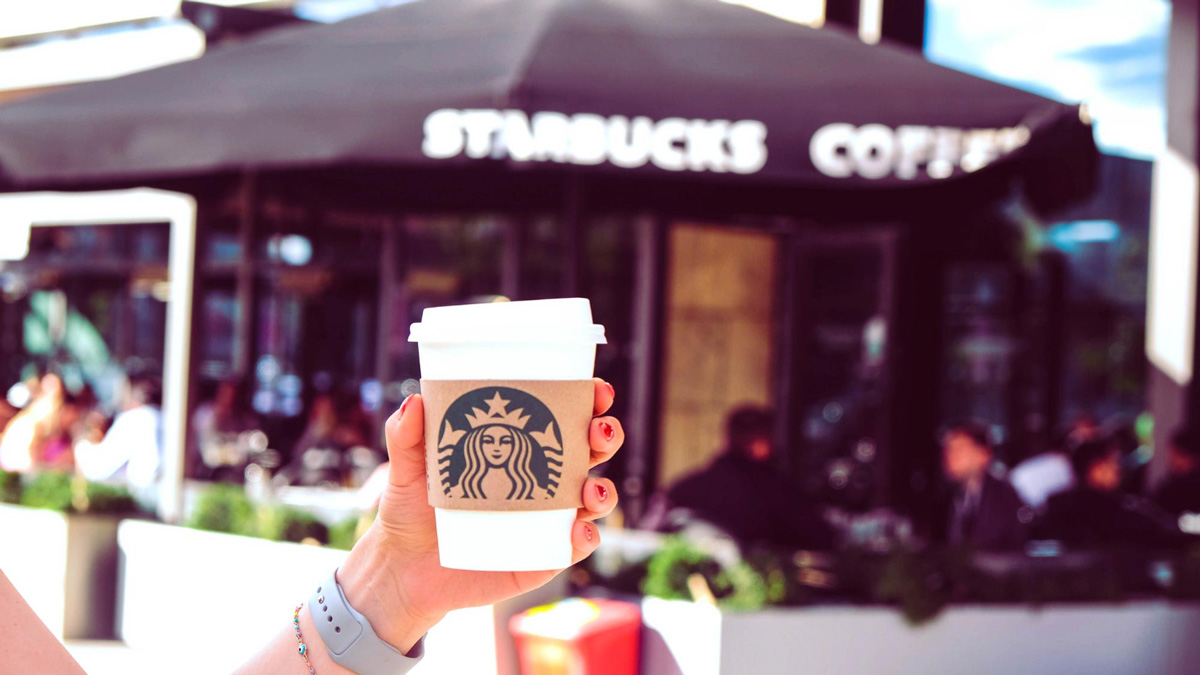
- Understanding Brand Activation
- The Importance of Brand Activation in Today's Market
- How Brand Activation Differs from Traditional Marketing
- Key Objectives of Brand Activation
- Types of Brand Activation
- From Strategy to Success
- Best Practices for Successful Brand Activation
- Errors to Avoid in Brand Activation
- Successful Brand Activation Examples
- Lessons Learned from Failed Activations
- Emerging Trends and the Future of Brand Activation
- Wrap-Up
Brand activation sets itself apart from conventional branding methods, often dismissed by many in modern marketing jargon. It typically includes direct engagement between business representatives and consumers, nurturing brand loyalty, and advocacy.
Imagine a well-known soda brand launching a new product line. Instead of exclusively depending on traditional advertising methods, they opt for interactive, more engaging, city-wide encounters.
Participants start unraveling the story of the brand’s new product and discovering its unique features and benefits. This immersive experience creates excitement and cultivates a more profound connection between the brand and its audience.
Brand activation seamlessly blends various communication channels, all packaged in a layer of creativity. When this gift wrap is opened, the brand springs into action, effectively engaging its audience.
In this article, we delve into the intricacies of brand activation and uncover its significance in contemporary marketing strategies.
Understanding Brand Activation
Brand activation is the heartbeat of modern marketing. It breathes life into brands through immersive experiences that resonate with consumers. It is about creating tangible, real-life encounters that transcend traditional advertising methods.
Brand activation can take various forms, including experiential marketing initiatives, immersive events, or interactive campaigns. By bringing brands directly into consumers’ lives, brand activation provides them with firsthand experiences that leave a lasting impression.
The ability to drive consumer action is central to brand activation. Unlike passive forms of marketing, brand activation compels individuals to engage with the brand meaningfully.
Whether it’s making a purchase, attending an event, or sharing their experiences with others, consumers are encouraged to take action due to these activations. By developing this level of engagement, brand activation increases brand awareness and generates tangible results that contribute to the brand’s success.
Moreover, brand activation is instrumental in establishing lasting connections between brands and their target audience. By crafting unforgettable experiences that resonate with consumers on a personal level, brand activation strengthens emotional connections that endure over time.
These connections go beyond simple brand loyalty; they represent a deep-seated affinity that can withstand market fluctuations and competitive pressures. Through brand activation, brands can build consumer relationships beyond transactional interactions.
Brand activation is a powerful tool for brands looking to make a meaningful impact in the marketplace. By bringing brands to life, brand activation drives consumer action and establishes lasting connections vital to long-term success.
In other words, it’s not just about selling products or services; it’s about creating authentic experiences based on consistent and transparent communication to build trust and credibility. Therefore, differentiating brands in a crowded marketplace is vital in today’s market.

The Importance of Brand Activation in Today’s Market
Brand activation is significant in today’s market because it can breathe life into brands and validate marketing claims through firsthand customer experiences.
When customers directly engage with a brand and validate its promises, lasting connections, and memorable experiences are forged, shaping perceptions and driving brand loyalty in the long term.
Brand Awareness
Brand activation is crucial in increasing brand awareness by providing consumers with experiences that leave a lasting impression.
Through immersive events and interactive campaigns, brands can captivate the attention of prospective customers and ensure that their name is top-of-mind when it comes to purchasing decisions.
For a related read, check out: What Is Brand Awareness?
Customer Interaction
Brand activation drives consumer engagement to new heights by encouraging direct interaction between consumers and brands. As a result, brands can foster meaningful connections with their target audience, leading to increased brand loyalty and advocacy.
Memorability
Brand activation creates memorable experiences that stick with consumers long after the event has ended. By delivering unique and engaging experiences, brands can ensure that their message resonates with consumers and is remembered well into the future.
Uniqueness
In a crowded marketplace, brand activation helps brands stand out by highlighting their unique value proposition. It enables brands to demonstrate what sets them apart from competitors and create a distinct identity in the minds of consumers.

Emotional Connection
Brands connect with consumers emotionally, creating deeper relationships and loyalty through activation methods. They can build strong connections with their target audience, increasing customer satisfaction and retention.
Word-of-Mouth Marketing
Brand activation encourages consumers to share their experiences with others, leading to organic word-of-mouth marketing. By creating memorable and shareable experiences, brands can use the power of social influence to reach new customers and expand their brand reach.
Data Collection
Brand activation provides valuable opportunities for brands to collect data and insights about their target audience. By tracking consumer interactions and behavior during activations, brands can acquire a practical understanding of consumer preferences and purchasing habits, which can inform future marketing strategies and campaigns.
Product Launches and Exhibitions
Brands can launch new products and demonstrate their features and benefits to consumers via a brand activation approach. By allowing consumers to experience products firsthand, brands can generate excitement and interest.
The emotional connection and enthusiasm evoked by brand activation ultimately translate into increased sales and market penetration for brands.
Online Visibility
Brand activation strategies provide shareable moments that can be developed through social media channels. By creating experiences that are visually captivating and engaging, brands can encourage consumers to share their experiences with their social networks, increasing brand visibility and reach.
Long-term Influence
Perhaps most importantly, brand activation has a lasting impact on consumers beyond the event itself. Brands can enhance long-term relationships with their target audience, leading to customer retention, loyalty, and, ultimately, sustained business success.
In summary, brand activation is a powerful tool for brands to stand out, connect with their audience, and ultimately achieve their long-term goals in an ever-evolving business landscape.
How Brand Activation Differs from Traditional Marketing
Brand activation differs significantly from conventional marketing methods relying on passive, one-way communication. Unlike traditional marketing, where messages are broadcast to a broad audience with little interaction, brand activation prioritizes active engagement and participation.
It transforms marketing efforts from passive to interactive, inviting consumers to participate actively in the brand experience. This shift captures attention and generates deeper connections between the brand and its audience.
Moreover, brand activation diverges from conventional marketing by sharing vibrant, authentic, and memorable experiences. Traditional marketing campaigns may often feel monotonous, impersonal, and generic, failing to leave a lasting impression on consumers.
In contrast, brand activation seeks to create emotionally resonant experiences, leaving consumers with vivid memories that linger long after the encounter. By infusing authenticity and creativity into every activation, brands ensure their message stands out in a crowded marketplace.
At the heart of brand activation lies experiential marketing, a strategy that immerses consumers in memorable and interactive experiences. Unlike traditional marketing tactics, which rely heavily on broadcast messages and static advertisements, experiential activation encourages direct engagement and participation.
Whether through pop-up events, live demonstrations, or interactive installations, experiential activation creates opportunities for consumers to connect with the brand on a deeper and more personal level.
This hands-on approach drives consumer engagement and develops authentic interactions as brands seek better results by actively pursuing their objectives.
Key Objectives of Brand Activation
The primary objectives of brand activation revolve around creating emotion and excitement among consumers, leading to increased customer retention and decreased client acquisition costs.
For this reason, brands aim to solidify their place in consumers’ hearts and minds, thus encouraging repeat business and loyalty. Moreover, the enthusiasm generated by brand activation initiatives often leads to organic growth and long-term business success.
Enhance Brand Visibility and Awareness
One of the primary objectives of brand activation is to increase brand visibility and awareness among its target audience significantly. By launching engaging events, immersive experiences, and interactive campaigns, brands can ensure their presence is felt in the marketplace.
Cultivate Trust and Credibility
Brand activation initiatives serve as a direct interface between the brand and its audience. By ensuring transparency in messaging and actions, brands can build credibility and create consumer trust.
According to Brand Equity, after actively engaging in a brand activation or experience, 91% of customers indicated that they would have a more positive outlook on a brand’s product or service.
Strengthen Value Proposition
Brand activation initiatives aim to reinforce the brand’s value proposition, vision, and mission. By showcasing their unique offerings and benefits through carefully curated experiences and messaging, brands can set themselves apart from competitors.
The activation initiatives provide a platform for brands to articulate their core values and connect with consumers on a deeper level. As a result, brands can reinforce their position in the market and strengthen their appeal to their target audience.
Improve Consumer Interaction and Engagement
Brand activation endeavors are directed toward active participation and interaction. Unlike traditional advertising methods, which are often passive and one-way, brand activation encourages consumers to participate actively in the brand experience.
Hence, experiential marketing activations, interactive installations, or social media challenges are focused on capturing and engaging the audience and establishing a sense of community around the brand.
Enhance Customer Loyalty and Retention
Lastly, brand activation enhances customer retention by creating unforgettable experiences that shape the customers’ perception of the brand. In today’s fast-paced world, brands must cut through the noise and make meaningful connections with their audience.
Brand activation provides the perfect opportunity for brands to engage with consumers meaningfully, creating moments that resonate emotionally and build lasting memories.
After all, these efforts aim to elevate every interaction with consumers to a high-quality, emotionally resonant experience. This approach emphasizes lasting relationships, ensuring that every interaction leaves a profound and memorable impact.
Types of Brand Activation
Brand activation includes various strategies and tactics for engaging consumers, building brand awareness, and driving consumer action.
In this overview, we’ll explore the different types of brand activation and how they enhance brand visibility, consumer engagement, and business growth.
Experiential Marketing: Immersive Brand Experiences
Experiential marketing is at the forefront of brand activation, immersing consumers in memorable and interactive experiences. It creates opportunities for direct engagement and personal connection with the brand through pop-up events, live demonstrations, or immersive installations.
By providing emotionally resonating tangible experiences, brands leave a lasting impression on consumers, fostering deeper connections and brand loyalty.
Digital Marketing Campaigns: Engaging Online Experiences
Digital marketing campaigns have transformed brand activation by leveraging online platforms to create engaging and immersive consumer experiences.
These campaigns incorporate immersive and interactive technologies to captivate audiences and drive meaningful interactions, resulting in more profound connections between brands and consumers.
Dream Farm Agency offers creative digital and interactive media solutions that enhance brand activation strategies.
Our expertise in immersive technologies ensures that digital marketing campaigns engage and leave a lasting impression on consumers. Moreover, our brand mascots can revolutionize how brands connect with their audience, incorporating a personal touch and interactive elements into online experiences and elevating brand engagement to new heights.
These examples illustrate the significance of digital brand activation to make an impact and stay ahead of the competition.
Sampling Campaigns: Enhanced with Immersive and Interactive Tech
Sampling campaigns allow consumers to try products firsthand and experience the brand tangibly. Sampling campaigns give consumers a taste of what the brand offers through product demonstrations, free samples, or trial offers.
However, immersive and interactive technologies transform traditional sampling methods, enabling brands to create engaging and memorable interactions with their audience. Through virtual reality (VR), augmented reality (AR), or interactive kiosks, consumers can explore products in a dynamic and immersive way.
This approach helps consumers better understand the features and benefits of services and products. It also increases the effectiveness of sampling campaigns and leaves a lasting impression on consumers, driving brand engagement and loyalty.
At Dream Farm Agency, we use immersive and interactive tech to transform sampling campaigns into unforgettable brand experiences.
In-Store Events: Bringing Brands to Life through Interactive Technology
In-store events bring the brand to life within the retail environment, creating opportunities for consumers to interact with the brand in a physical setting. It provides consumers with a memorable and immersive brand experience.
Even in-store events can benefit from integrating interactive technology, enhancing the overall brand experience for consumers. For instance, brands can utilize interactive displays or touchscreen kiosks to provide product information, showcase new features, or offer personalized recommendations based on customer preferences.
By creating a buzz within the store, brands can drive foot traffic, increase sales, and enhance the overall shopping experience for consumers.
Promotions: Adding Value to Consumers with Immersive Experiences
Promotions are a classic form of brand activation, offering consumers incentives to purchase products or engage with the brand. Whether through discounts, coupons, or giveaways, promotions encourage consumers to take action and purchase.
By providing added value to consumers, brands can drive sales and build brand loyalty while generating excitement around the brand.
Social Media Campaigns: Harnessing Online Communities with Interactive Solutions
Social media campaigns use the power of online platforms to engage with consumers and improve brand messaging. Whether through user-generated content (UGC) contests, hashtag campaigns, or viral challenges, social media contests and movements encourage consumers to participate and share their experiences with the brand.
By tapping into consumers’ social networks, brands can increase brand visibility, drive engagement, and create a sense of community around the brand.
From Strategy to Success
Brand activation is a strategic and dynamic journey that involves careful planning, creative execution, and thorough evaluation. Following the following process, brands can effectively connect with their audience, drive engagement, and achieve their business objectives through brand activation.
Planning and Strategy
Meticulous groundwork is laid to ensure the success of the campaign. By carefully planning and strategizing, you can modify your activation initiatives to resonate with their audience and communicate their brand message, setting the stage for a successful execution and measurable results.
Identifying Target Audience
The first step in brand activation is identifying and knowing your target audience. By conducting thorough market research and collecting insights, you can better understand your audience’s preferences, behaviors, and pain points.
This knowledge allows you to tailor your activation efforts to resonate with your audience and effectively communicate your brand message.
Setting Clear Objectives
For successful brand activation, you should set specific, measurable, achievable, relevant, and time-bound (SMART) objectives. Accordingly, you have to determine what you want to achieve, whether it’s increasing brand awareness, driving sales, or enhancing customer loyalty.
Clearly defined objectives provide direction and focus for your activation efforts, guiding decision-making throughout the process.
Execution of Brand Activation
The execution phase of brand activation is where the strategic planning and creative concepts come to life. It involves implementing the carefully crafted activation plan, whether through experiential events, digital campaigns, or sampling initiatives.
Choosing the Right Activation Type
With your objectives in mind, the next step is to choose the right activation type that reflects your goals and resonates with your audience.
Whether it’s experiential marketing events, digital campaigns, sampling initiatives, or in-store activations, selecting the appropriate activation type ensures that your efforts effectively reach and engage your target audience.
Crafting a Memorable Experience
Focus on crafting a memorable experience that leaves a lasting impact on your audience is fundamental. From creative concepts and storytelling to interactive elements and sensory stimuli, every aspect of the experience should be carefully designed to captivate and engage your audience, effectively conveying your brand message and driving action.
Measurement and Evaluation
Through careful measurement and evaluation, brands can ensure that their brand activation initiatives drive tangible results and contribute to overall business objectives.
Evaluating Success
Key Performance Indicators (KPIs) and Return on Investment (ROI) are critical metrics for evaluating the success of brand activation initiatives. By defining clear KPIs, brands can track progress and assess the impact of their activation efforts against predetermined goals.
Furthermore, ROI analysis is essential for determining brand activation campaigns’ financial success and efficiency. ROI calculates the ratio of the campaign’s net profit to its cost, providing insights into the overall profitability and effectiveness of the activation strategy.
By comparing the revenue generated or cost savings achieved with the campaign’s investment, brands can assess the return on their marketing investment and make informed decisions about resource allocation and future activations.
Together, KPIs and ROI provide a comprehensive framework for measuring the performance and effectiveness of brand activation initiatives.
By tracking key metrics and analyzing the financial impact of activations, brands can gain valuable insights into their campaigns’ success, identify improvement areas, and refine their strategies to deliver maximum impact and drive higher ROI.
Analyzing Success and Areas for Improvement
Finally, brands need to analyze the results of their brand activation campaign against their established KPIs to evaluate their performance and identify areas for improvement. By examining the data and insights gathered throughout the activation process, they can gain valuable insights that inform future strategies and optimize their approach for more significant impact and success.

Brand activation is crucial to modern marketing strategies, requiring careful planning, creative execution, and rigorous evaluation. These steps are essential for ensuring best practices and maximizing the effectiveness of brand activation initiatives.
Best Practices for Successful Brand Activation
Successful brand activation goes beyond traditional marketing approaches, requiring a strategic blend of creativity, audience understanding, and measurement.
Below are critical practices that drive successful brand activation and help brands create lasting impressions in consumers’ minds.
Understanding Target Audience
Successful brand activation begins with a deep understanding of your target audience. By conducting thorough market research and gathering insights into their preferences, behaviors, and pain points, you can tailor your activation efforts to connect deeply with your audience and clearly articulate your brand message.
Fostering Emotional Connections
Emotional connections are at the heart of successful brand activation. By tapping into consumers’ emotions and creating memorable experiences that resonate on a personal level, brands can foster stronger connections with their audience, driving brand affinity and advocacy.
Integrating Digital and Physical Experiences
Integrating both digital and physical experiences is essential for successful brand activation. By seamlessly combining online and offline channels, brands can create immersive and cohesive experiences that engage consumers across multiple touchpoints, driving brand awareness and loyalty.
Consistency across Channels
Consistency across channels is critical for reinforcing brand identity, fostering trust, and ensuring a seamless consumer experience. When messaging is aligned across different channels, it strengthens the brand’s narrative and values, providing a cohesive brand story.
This integration fosters a holistic brand experience, where consumers encounter consistent messaging and imagery, regardless of the channel they engage with. It establishes a strong brand presence, enhances credibility, and cultivates lasting consumer relationships.
Building Partnerships
Collaborating with relevant partners, influencers, or organizations helps to extend the brand’s reach and credibility. Strategic partnerships can amplify your message and attract a larger audience. Thus, brands can extend their reach, increase engagement, and generate buzz around their activation initiatives.
Integrating with Larger Campaigns
Integration with more extensive campaigns maximizes its impact and aligns with overarching marketing objectives. By seamlessly integrating activations into broader campaigns, brands can amplify their reach, reinforce key messaging, and maintain a cohesive brand experience across multiple touchpoints.
This integration also ensures consistency in branding, messaging, and storytelling, strengthening brand recall and consumer resonance.
Personalization
Through the strategic use of data and insights, brands can create customized interactions that resonate more deeply with their audience. This could include personalized product recommendations, targeted promotions based on past behavior, or personalized communications addressing consumers by name.
Personalization enhances relevance and strengthens the emotional connection between the consumer and the brand, underlining loyalty and advocacy.
Continuous Measuring and Adapting
By continuously monitoring key performance indicators (KPIs) and evaluating the effectiveness of activation efforts, brands can identify areas for improvement.
Performance data insights help refine future activations. Furthermore, continuously adapting and iterating strategies help optimize results and better meet the audience’s needs.

Each practice is fundamental to achieving activation success. By continually adapting and refining strategies based on performance data, brands can ensure that their activations remain relevant and impactful in an ever-evolving marketing landscape.
However, implementing these best practices for successful brand activation may encounter obstacles such as resource constraints, market fluctuations, or evolving consumer preferences.
Challenges and Solutions in Brand Activation
Navigating the intricacies of brand activation requires a multifaceted approach that addresses various challenges head-on while capitalizing on opportunities for success. Here, we’ll explore how brands can tackle common challenges in brand activation and implement solutions to drive meaningful results and engagement with their target audience.
Limited Consumer Visibility
Limited consumer visibility can hinder the ability to target and engage with the intended audience effectively. Without clear insights into consumer demographics, behaviors, and preferences, brands may struggle to create relevant and compelling activation experiences. This can lead to wasted resources and overlooked opportunities to connect with potential customers.
Solution: To address a lack of consumer visibility, brands can implement data capture tools and techniques to collect valuable information on consumer behavior, preferences, and demographics.
Ambiguous Objectives
Unclear goals can impede the success of brand activation strategies by leading to confusion and inefficiency in planning and execution. When objectives are vague from the outset, measuring progress and determining whether the activation has achieved its intended outcomes becomes challenging.
This lack of clarity can also result in misalignment with broader business objectives, making it challenging to justify the investment of time and resources into the activation.
Solution: Brands should establish measurable goals and key performance indicators (KPIs) that support broader business objectives, ensuring that activation efforts are focused and purposeful.
This clarity helps to guide planning and execution, enabling brands to measure progress and evaluate success effectively.
Depleted Financial Resources
Running out of budget is a common challenge that can arise while implementing brand activation strategies, mainly if expenses are not carefully monitored and managed.
Executing activations that deliver a meaningful impact and generate a positive return on investment becomes difficult without sufficient funding.
Solution: To mitigate the risk of running out of budget, brands should conduct thorough budget planning and develop contingency plans to address unexpected expenses.
By identifying potential risks and expenses upfront and setting aside reserves for unforeseen circumstances, brands can ensure they have the essential resources to execute their activation strategies successfully.
Failing to Keep Up with Market Trends
Keeping up with market trends can help grow and expand brand activation strategies, especially for brands that lack the necessary resources or infrastructure to support increased demand.
When activations cannot keep pace with growing audience engagement or market opportunities, brands risk missing out on valuable growth opportunities and losing momentum in their marketing efforts. This can ultimately limit the long-term success and sustainability of brand activation initiatives.
Solution: Brands can prioritize activities with the greatest impact and efficiency potential. By focusing on one successful activation and building momentum, brands can streamline processes and allocate resources more effectively.
Technology and automation tools can also help brands optimize workflows, freeing up valuable time and resources to scale their activation efforts more efficiently.
Absence of Effective Data Collection Methods
Feeling lost in tracking event success can hinder the ability to evaluate the effectiveness of brand activation strategies and make data-driven decisions for future campaigns. Without clear metrics and measurement frameworks, brands may struggle to assess the impact of activations on critical objectives such as brand awareness, customer engagement, and sales.
Lack of clarity can lead to missed chances for optimization and improvement, resulting in suboptimal outcomes and wasted resources.
Solution: This challenge can be resolved by establishing clear metrics and measurement frameworks to evaluate the effectiveness of activation efforts.
Brands should define key performance indicators (KPIs) that align with activation objectives and use technology solutions such as event management software or analytics platforms to track and measure key metrics in real time. Data-driven insights help brands make informed decisions and optimize their activation strategies for success.
Difficulty in Proving Return on Investment
Demonstrating ROI represents a significant challenge for brand activation strategies, particularly when quantifying the impact of immaterial benefits such as brand awareness, customer loyalty, and brand sentiment.
Without clear metrics and measurement methodologies, brands may struggle to attribute specific outcomes to their activation efforts and justify the investment of time and resources. This can make it difficult to secure future funding for brand activation initiatives.
Solution: Brands should take a holistic approach to measuring the impact of activation efforts, considering both tangible and intangible outcomes. The brands can track progress and evaluate the effectiveness of activations in achieving key objectives such as brand awareness, customer engagement, and sales.
Additionally, leveraging data analytics and attribution modeling techniques can help brands quantify the value of activations and more effectively demonstrate ROI to stakeholders.
Incoherent Global Strategies
Disjointed global strategies present a challenge for brands operating in multiple markets, as they can lead to inconsistencies in messaging, branding, and execution. When activations are not aligned with overarching brand objectives and adapted to local market dynamics and preferences, brands risk diluting their brand identity and confusing consumers.
This lack of cohesion can undermine the effectiveness of brand activation strategies and limit the ability to drive meaningful results across diverse geographies and cultures.
Solution: This challenge can be addressed by developing cohesive activation strategies aligned with overarching brand objectives and adapted to local market dynamics and preferences.
Brands should establish centralized governance and coordination structures, implement standardized processes and guidelines, and leverage technology solutions for seamless communication and collaboration across global teams.
By enhancing alignment and consistency, brands can ensure that activation efforts are effective and impactful across diverse geographies and cultures.
Complex and disjointed technology workflows
Grueling, disconnected tech stack processes can hinder the efficiency and effectiveness of brand activation strategies, making it challenging to streamline workflows, collaborate effectively, and leverage technology to its full potential. When systems and tools are not integrated or optimized for compatibility and usability, brands may waste time and resources on manual tasks, data silos, and redundant processes. This can result in frustration, inefficiency, and missed chances to innovate and differentiate in a competitive marketplace.
Addressing the various challenges faced in brand activation strategies requires strategic planning, resource allocation, and technological innovation. By implementing solutions tailored to each challenge, brands can overcome a lack of consumer visibility, unclear goals, budget constraints, and scalability issues.
Errors to Avoid in Brand Activation
While brands strive to connect with their audience through innovative activations, missteps can undermine their efforts and damage brand credibility. From losing sight of the emotional connection with consumers to failing to deliver promises, brands face various pitfalls derailing their activation strategies. In this section, we’ll explore five critical errors to avoid in brand activation to inspire your activation strategies.
Losing Sight of Emotion over Logic
One critical error to avoid in brand activation is becoming overly focused on logic and neglecting the emotional connection with consumers. While data and reasoning are essential, activations that lack emotional resonance may fail to engage audiences effectively.
Brands should strive to balance logic and emotion, crafting activations that appeal to the rational and emotional aspects of consumer behavior.
Misguided Questions
Another common mistake is asking the wrong questions during the planning and execution of brand activation initiatives. Focusing solely on superficial metrics or irrelevant factors may lead to misguided strategies and ineffective outcomes.
Instead, brands should prioritize asking the right questions that delve deeper into consumer motivations, preferences, and pain points, enabling them to create authentic activations.
Excessive Ambition Overshadowing Genuine Efforts
Brands often fall into the trap of prioritizing excessive ambitions and flashy marketing campaigns over meaningful actions that demonstrate their commitment to consumers. Empty rhetoric without tangible follow-through can damage brand credibility and erode consumer trust.
Therefore, brands should focus on delivering consistent, genuine experiences and actions that align with their brand values and resonate with consumers on a personal level.
Diluting the Narrative: Self-Inflicted Wounds
Another error to avoid is diluting the brand narrative or message through inconsistency or conflicting messaging across different channels or touchpoints.
Incoherent storytelling can confuse consumers and weaken brand identity, undermining the effectiveness of brand activation efforts. Brands should ensure their messaging remains cohesive and aligned with their overarching brand narrative, delivering a unified and compelling story that resonates with their target audience.
Ethical Shortcomings
Finally, brands must be cautious of engaging in inauthentic or unethical practices during brand activation. Consumers today are increasingly discerning and value-driven, and they expect brands to uphold ethical standards and social responsibility.
Greenwashing, misleading claims, or exploitative tactics can damage brand reputation and erode consumer trust. Greenwashing is about environmentally friendly claims aimed at deceiving the audience.
Brands should prioritize authenticity, transparency, and integrity in their activation efforts. They should ensure that their actions align with their stated values and resonate positively with consumers.
By sidestepping pitfalls, brands can enhance the effectiveness and credibility of their activation efforts. By committing to authenticity, transparency, and integrity, brands can build trust and loyalty with consumers, ultimately leading to long-term success and brand growth.
Successful Brand Activation Examples
Brand activation is more than just marketing; it’s about creating memorable experiences that resonate with consumers and drive meaningful engagement with the brand. Here, we introduce some successful brand activations that have captivated audiences, strengthened brand loyalty, and driven tangible results.
Starbucks
Starbucks is known for its innovative brand activations, such as the “Starbucks Reserve Roastery” concept, which offers customers an immersive coffee experience. These stores feature interactive coffee bars, roasting demonstrations, and tasting rooms, allowing customers to engage with the brand on a deeper level.
Starbucks also uses technology with initiatives like the “Starbucks Rewards” program, which offers personalized rewards and incentives to loyal customers, driving repeat visits and brand loyalty.

Nike
Nike’s brand activations are known for their innovative and immersive experiences, such as the “Nike Run Club” and “Nike Training Club” events. These activations allow participants to engage in group workouts, receive personalized coaching, and test the latest Nike products.
Nike also utilizes technology with initiatives like the “Nike Run Club” app, which tracks and analyzes users’ running data to provide personalized training plans and motivation.

Google Assistant Ride
Google created a unique brand activation with the “Google Assistant Ride,” a pop-up installation featuring a fleet of bicycles equipped with Google Assistant-powered devices.
Participants could ride the bikes around the city while interacting with the voice-activated assistant to answer questions, play music, and navigate their route. This activation showcased the capabilities of Google Assistant in a fun and interactive way, driving awareness and engagement with the brand.
Spotify Wrapped
Spotify’s “Wrapped” campaign has become a highly anticipated annual event where users can access personalized insights into their music listening habits from the past year.
Through interactive data visualizations, personalized playlists, and social sharing features, Spotify engages users and encourages them to reflect on their music experiences. This activation reinforces brand loyalty and generates buzz and social media engagement as users share their “Wrapped” experiences with friends and followers.
Ikea Bath Boats
Ikea’s innovative initiative to utilize bath boats to clear trash from the Thames River is another example of brand activation with a sustainability focus. By repurposing their products meaningfully, Ikea showcases their commitment to environmental responsibility, engages directly with the community, and raises awareness about the significance of preserving natural habitats.
This brand activation initiative aligns with Ikea’s brand values and resonates with consumers who prioritize sustainability. Furthermore, it demonstrates how brands can leverage creative approaches to make a positive impact while strengthening their brand image and fostering consumer loyalty.

Desperados’ Epic Parties
Desperados, a beer brand, created the “Epic Parties” campaign, which involved hosting exclusive events in unique locations worldwide. These parties featured immersive experiences, live music performances, and interactive installations, creating memorable moments for attendees.
By positioning itself as a brand that champions adventure and spontaneity, Desperados was able to connect with its target audience and drive excitement and engagement with the brand.
Adidas and Bluewater
Adidas partnered with the Bluewater shopping center in the UK to create a brand activation centered around sustainability and environmental awareness.
The activation included initiatives such as a recycling program for old athletic shoes, interactive displays highlighting Adidas’ sustainable practices, and workshops on eco-friendly living. Adidas strengthened its brand image by aligning with consumers’ growing interest in sustainability and meaningfully connecting with environmentally conscious shoppers.

Red Bull
Red Bull is known for its innovative brand activations, such as the “Red Bull Stratos” mission, where skydiver Felix Baumgartner broke the sound barrier during a freefall from the edge of space.
This high-profile event generated massive media coverage and social media buzz, reinforcing Red Bull’s image as a brand associated with extreme sports and adrenaline-fueled experiences. Red Bull also hosts events like the “Red Bull Music Festival” and “Red Bull Flugtag,” which attract thousands of participants and spectators, further solidifying its position as a leading player in the energy drink market.
By studying these examples, brands can get inspiration and identify critical elements contributing to their success. Additionally, analyzing instances where brand activations may have fallen short provides important lessons and opportunities for improvement.
Lessons Learned from Failed Activations
Brand activations are meant to be exciting, engaging, and memorable experiences for consumers, designed to create a strong connection between the brand and its target audience.
However, not all activations are successful. Some can fail spectacularly, leading to wasted resources, negative publicity, and brand reputation damage. Here are some examples of failed brand activations and the lessons learned from them:
Amazon’s “Man in the High Castle”
In 2015, Amazon launched a promotional campaign for its original series “Man in the High Castle,” based on Philip K. Dick’s novel illustrating an imagined scenario where the Axis powers won World War II.
As part of the campaign, Amazon wrapped subway cars in New York City with imagery reminiscent of Nazi Germany and Imperial Japan, including the controversial use of the Nazi Reichsadler eagle symbol.
The campaign sparked immediate outrage and criticism from commuters, Holocaust survivors, and advocacy groups who found the imagery profoundly offensive and insensitive.
Lesson Learned: Cultural sensitivity and awareness are paramount when designing promotional campaigns. Amazon’s failure to anticipate the adverse reaction to the Nazi-themed subway cars underscored the importance of understanding historical context and the potential impact of imagery on different audiences.
Brands must exercise caution when incorporating sensitive themes into their marketing efforts and be prepared to address backlash swiftly and effectively.
Pepsi’s Kendall Jenner Ad
Perhaps one of the most infamous brand activation failures in recent memory, Pepsi’s ad featuring Kendall Jenner sparked widespread criticism and backlash.
The ad attempted to co-opt the imagery of protest movements like Black Lives Matter, portraying Jenner handing a Pepsi to a police officer amidst a protest, seemingly solving all tensions. The ad was accused of trivializing serious social issues and exploiting activism for commercial gain. Pepsi quickly removed the ad and released a formal apology.
Lesson Learned: Authenticity is paramount in brand activation and activism. Attempting to capitalize on social movements without a genuine commitment to the cause can backfire spectacularly. Brands must approach sensitive issues with humility, sincerity, and a deep understanding of the context.
Fyre Festival
While not a traditional brand activation, the Fyre Festival is a cautionary tale of the consequences of overpromising and underdelivering.
Marketed as a luxury music festival set on a private island with top-notch accommodations and performances by A-list artists, the reality was far from the glamorous picture painted by the organizers. Attendees arrived to find inadequate infrastructure, subpar accommodations, and canceled performances, leading to chaos and legal repercussions.
Lesson Learned: Honesty and transparency are crucial in managing expectations. Exaggerating or misrepresenting what a brand activation or event will offer can lead to disappointment, disillusionment, and irreparable damage to the brand’s reputation.
Failed brand activations provide valuable lessons for brands, highlighting the importance of careful planning, sensitivity to cultural and social norms, and understanding the potential impact of marketing campaigns.
Emerging Trends and the Future of Brand Activation
The Future of Brand Activation is on the verge of a transformative evolution, marked by unprecedented technological advancements, shifting consumer preferences, and a growing emphasis on sustainability.
Personalized AI-Driven Technologies
Brands are expected to use artificial intelligence (AI) to provide personalized experiences that align with individual preferences and behaviors. By leveraging AI-driven insights, brands can create activations that resonate with consumers on a deeper level, driving engagement and loyalty.
Metaverse
Reflecting the surge in virtual and augmented reality technologies, brands are exploring new ways to create immersive brand experiences within the metaverse by integrating the physical and digital spheres. Brands try to engage consumers in interactive environments that blur the lines between reality and virtuality, reinforcing deeper connections and brand affinity.

Sustainability and Simplicity
As consumers increasingly prioritize sustainability and minimalist living, brands are reimagining their activation strategies to align with these values. By embracing sustainable practices and simplifying their messaging, brands can resonate with environmentally-conscious consumers and differentiate themselves in the marketplace.
The future of brand activation promises a landscape of innovation where personalized AI-driven experiences, immersive metaverse engagements, and sustainable practices redefine how brands connect with consumers.
By embracing these trends and staying agile, brands can navigate the evolving landscape of brand activation and create meaningful experiences that resonate with consumers in the coming years.
Wrap-Up
Brand activation is vital for companies looking to create meaningful connections with consumers and drive engagement. As explored throughout this article, brand activation encompasses diverse tactics, from experiential marketing to digital campaigns, to bring brands to life and foster deeper relationships with audiences.
By understanding the basics, types, processes, best practices, challenges, and real-world examples of brand activation, companies can discover new opportunities for growth and differentiation in an increasingly crowded marketplace.
As brands navigate the complexities of modern marketing, it becomes increasingly clear that successful brand activation requires more than just creative flair and innovative ideas.
It demands a deep understanding of consumer behavior, strategic planning, seamless execution, and a commitment to continuous improvement.
By embracing the lessons learned from successful and failed activations, brands can refine their approach, anticipate challenges, and stay ahead of evolving trends.
Looking to the future, the landscape of brand activation will undoubtedly evolve with emerging technologies and shifting consumer preferences.
At Dream Farm Agency, we craft immersive and interactive brand experiences that captivate audiences and drive meaningful engagement. Our team is here to bring your brand vision to life.
Contact us today or share your queries below to learn more about how we can support your brand through creative and effective brand activation strategies. Let’s create something extraordinary together!

Fareena



